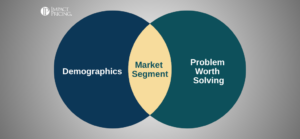Surely you’ve heard of price segmentation, but have you heard of product segmentation?
A friend sent me an article about fashion – a topic I know nothing about. But the title was, “As Retail Sales Grind to a Halt, Brands Weigh the Pros and Cons of Discounting.”
It sounded interesting.
After a read through, the lesson that jumped out at me is the importance of segmenting your products.
Fashionistas, I am sorry for everything about fashion I’m about to get wrong. Luckily I know pricing. The article had several luminaries weigh in on whether or not to discount in the horrible times. They had interesting answers, mostly no’s but some yes’s. My answer would be it depends.
On what you ask?
The characteristics of the products, which is why you want to segment your products.
Thinking About how to Segment Your Products
In a simplistic view of fashion, let’s break the world up into seasonal and non-seasonal clothing. For the sake of simplicity, we will use ladies blouses as the prototypical seasonal product and men’s underwear as the prototypical non-seasonal product. Imagine retailers and manufacturers bought a bunch of inventory of each, and now find that very few people are shopping. Sitting on inventory is expensive. Should they lower their prices to move the products?
Let’s assume for this example that lowering the price would boost demand and would have no long term negative consequences to the brand. Should you do it?
On dresses probably. On underwear probably not.
With blouses, if you don’t sell them in season you have to hold them for an entire year before they will sell. Next year, will the style be the same or different? Now you have a year of carrying costs with high risk the product many not be valuable next season anyway.
Underwear is different. Regardless of the time of year, people will still be buying underwear. We may not leave our houses right now, but once we can, we will still buy underwear. Underwear fashion probably doesn’t change that often. (My tastes in underwear don’t change often, but that’s probably TMI.)
What If We Don’t Discount?
If we don’t discount either product, then for blouses we probably won’t be able to sell til next year and it still may require a deep discount. For underwear, we should be able to sell our existing inventory once people are allowed to leave their homes again. It seems much more important to discount and move the blouse inventory quickly. Holding the underwear inventory is less consequential.
Hence, the recommendation to discount blouses and not discount underwear.
Questions to Ask When Considering Your Product Characteristics
Besides seasonality, here are several other characteristics that you may want to consider.
- Does this product bring buyers into your ecosystem?
- Is it a will I or a which one product?
- If there is competition, how tough is the competition? What is the competitor doing?
- Is it a durable or consumable product?
- Is it perishable? If you don’t sell it now will it be worth significantly less later?
- Is it physical or digital?
- High or low margin? High or low ASP?
- Are there large storage or carrying costs?
- Are the buyers price sensitive?
- Do buyers use this product when forming their pricing expectations of us?
There are many more, but here’s the real lesson. Your products probably have different characteristics. Once you understand the characteristics for your products and situations that matter, you should consider using different pricing strategies for different types of products. In other words, segment your products.
What do you think?















